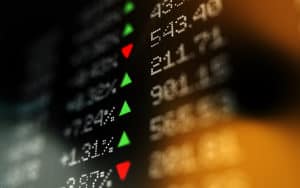 Citadel Securities has become Europe’s largest electronic liquidity provider systematic internaliser (ELP SI) in a shake-up of the landscape this year, according to figures from Rosenblatt Securities seen by The TRADE.
Citadel Securities has become Europe’s largest electronic liquidity provider systematic internaliser (ELP SI) in a shake-up of the landscape this year, according to figures from Rosenblatt Securities seen by The TRADE.
Rosenblatt Securities’ statistics from January to October revealed that Citadel Securities first surged ahead as the largest ELP SI in terms of market share in April this year, overtaking London-based rival SI operator XTX Markets which had held the top spot throughout the first quarter.
XTX Markets managed to regain ground as the largest ELP SI in May and June but failed to hold off Citadel Securities in the third quarter and in October.
From June to August, XTX Markets saw its ELP SI market share decline from 33.6% to 26%, while Citadel Securities’ share grew steadily from 32.6% to 33.3% in the same period. Citadel Securities guarded its position as the largest ELP SI throughout September and October.
Six ELP SIs currently report monthly figures to Rosenblatt Securities, including Citadel Securities, Hudson River Trading, Jane Street, Tower Research Capital Europe, Virtu Financial, and XTX Markets.
“The battle for ELP SI market share intensified this year, with activity starting to concentrate among four of the six venues that report monthly volume data to us,” Anish Puaar, market structure analyst at Rosenblatt Securities, told The TRADE.
As Citadel Securities and XTX Markets battled for the top spot, competition to be the third-largest ELP SI was equally intense as Hudson River Trading managed to narrow the gap and overtake Tower Research.
Hudson River Trading’s market share has surged this year from 11.1% in January to 18.9% by the end of October, while Tower Research’s market share declined from 22.8% to just 16.5% over the same period.
“While many market participants consider ELP SIs to be a positive addition to the post-MiFID II venue landscape, they are at risk of being restricted by regulatory reforms that primarily appear to address concerns with bank SIs,” Puaar added.
The MiFID II review targeted SIs with proposed sweeping changes and suggestions they be banned under the share trading obligation. At the same time, recent rules implemented in June under the Investment Firm Review hugely impacted ELP SIs’ price improvement capabilities by banning them from offering sub-tick price improvements for transactions that are below large in scale.
A report on ELP SI activity in France from Autorité des Marchés Financiers (AMF) earlier this year warned that the incoming rules on tick sizes would massively dampen SIs’ ability to improve prices for clients. Almost 40% of total volumes traded during the period the AMF analysed on SIs were at a price that is now not allowed under the rules.
The TRADE also revealed as part of an in-depth investigation that XTX Markets was in fact the largest ELP SI in France in the AMF’s report and that it provided the lowest market impact and highest price improvement during the period analysed.
The introduction of the tick size regime across the SI landscape may have contributed to the shake-up in ELP SIs market shares this year.
Speaking to The TRADE about the tick size changes and its impact on ELP SIs, Jigar Patel, global head of business development, told The TRADE that XTX has been supportive of tick size harmonisation across exchanges and SIs as it levels the playing field between venues.
“The recent harmonisation has meant that SIs providing price improvement today must do so at meaningful levels (at least one ESMA tick), which also allows us to further differentiate our offering,” Patel added.
“Per the AMF data from earlier this year, among ELP SIs – XTX provided the most price improvement, which was greater than or equal to one ESMA tick the most often. XTX SI continues to offer price improvement at full ticks today and we have received positive feedback from our clients for doing so.”
While retail investors place great value on a venue’s ability to offer price improvement, institutional investors and buy-side traders tend to focus on other factors such as market impact or size.
Jonathan Finney, head of global equity development at Citadel Securities, told The TRADE that while price improvement is important, Citadel Securities has instead focused on three variables in its approach to operating its ELP SI, size of liquidity, price reversion, and breadth of liquidity.
“Our success over the past year, and particularly the last quarter, is a testament to the breadth, size, and quality of liquidity that we provide and the market’s growing appreciation for these benefits, which have been especially valuable amid the challenging trading conditions created by COVID-19,” Finney said
For the buy-side, most are in agreement that SIs are important execution venues and rejected the EU regulator’s proposed restrictions on SIs in the MiFID II review. However, concerns with transparency, particularly with the ELP SIs, have persisted among traders since the introduction of MiFID II in 2018.
“The way we view it is we want the market to be fair. We don’t want anyone to have an advantage over anyone else, whether that’s latency, tick size or just information,” Gregg Dalley, global head of trading at Schroders, said on a panel about SIs at the virtual TradeTech conference last month.
“We aren’t worried about the ELP restrictions too much, but if they are 40% of the market then we want that to be more transparent and get that data. Back in March, if that suddenly jumps to 60% of the market, or 70% on some days it was rumoured, we had no insight into that. We need the data on those numbers.
“We definitely get data back from the brokers, but if we are interacting with the order book for maybe one in two prints with an ELP, we have no insight into that interaction with the market.”